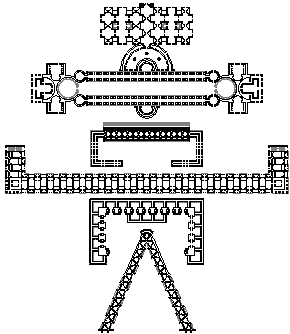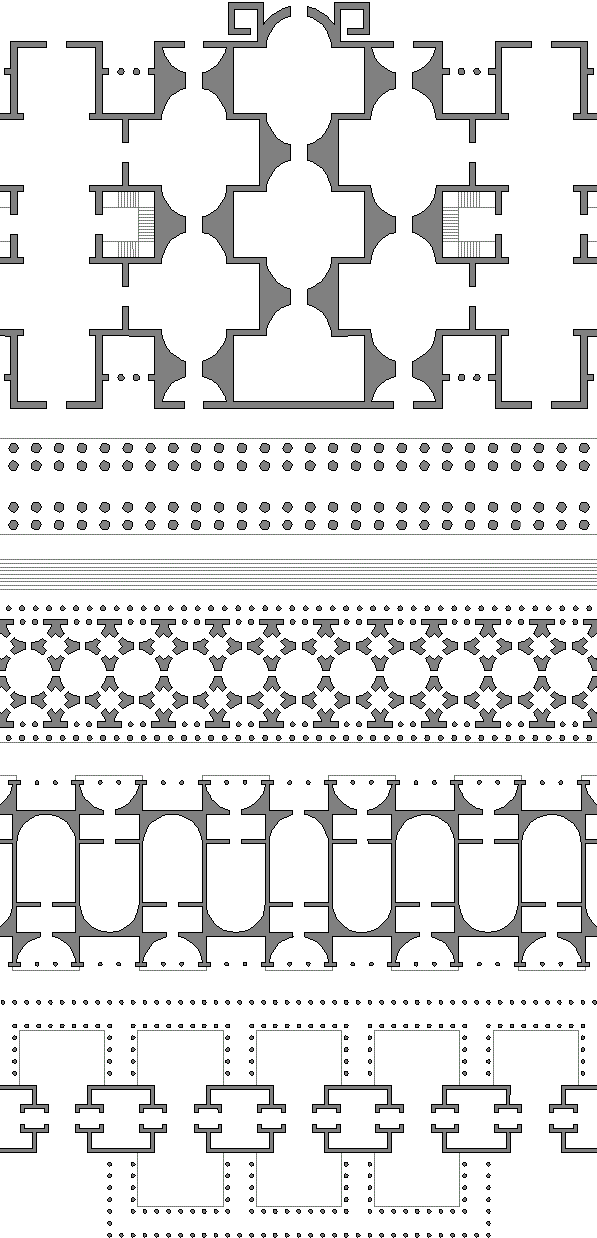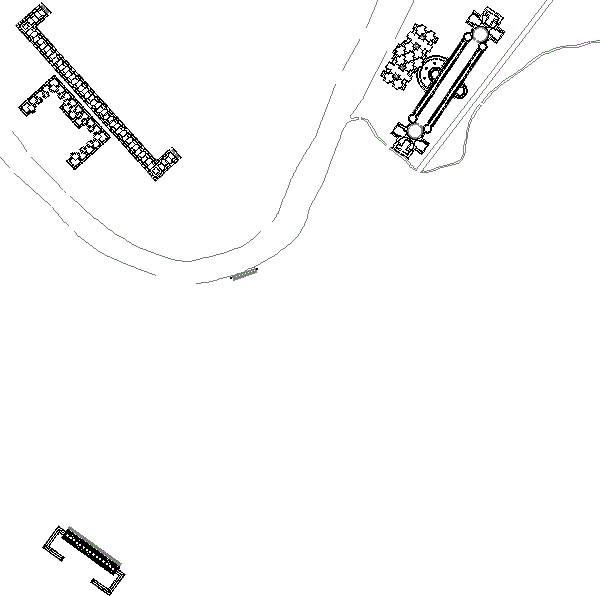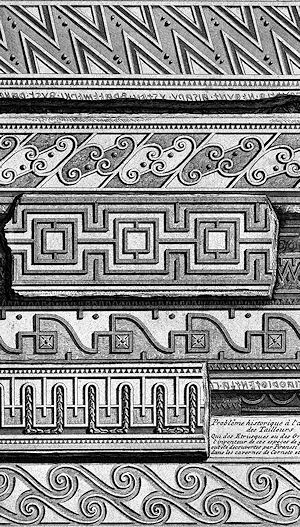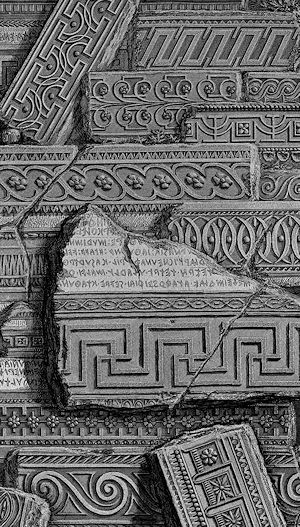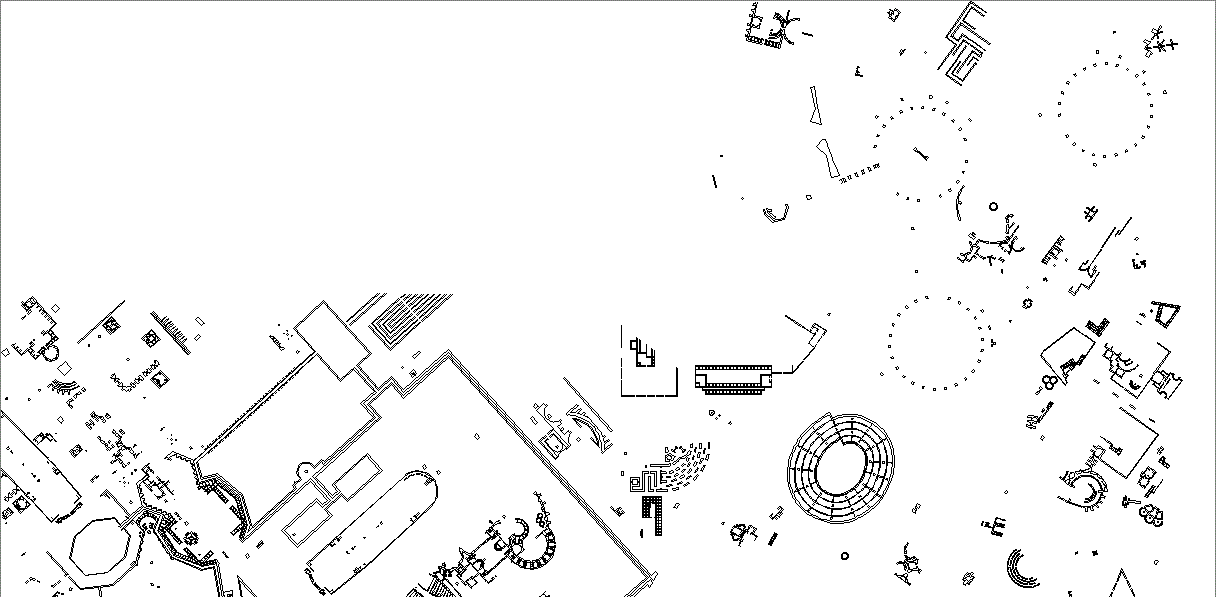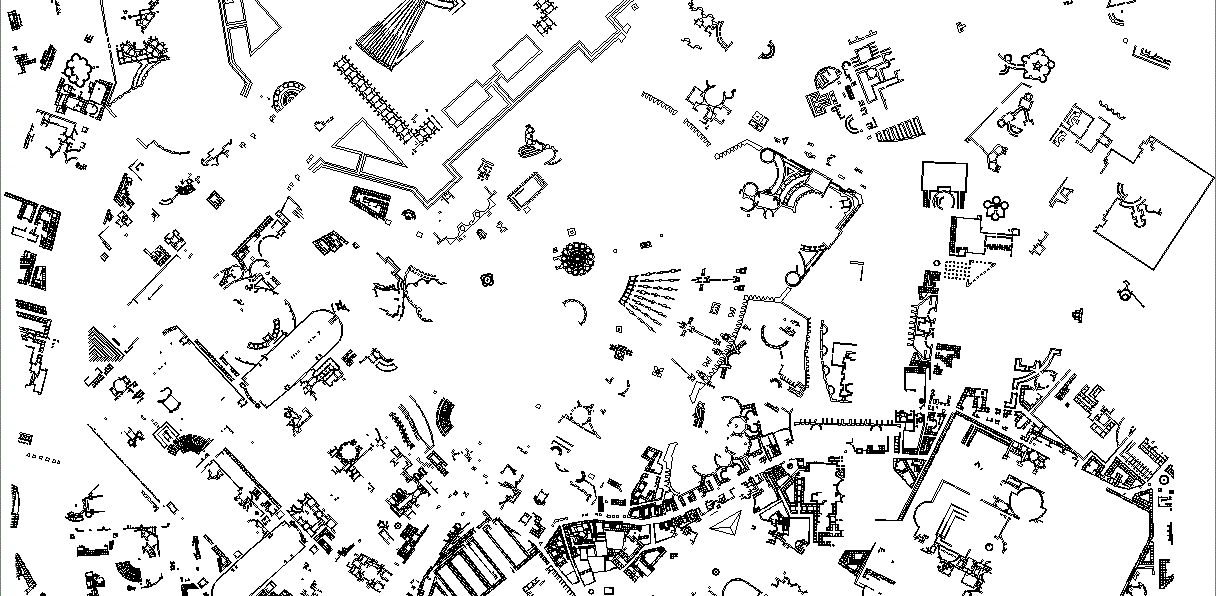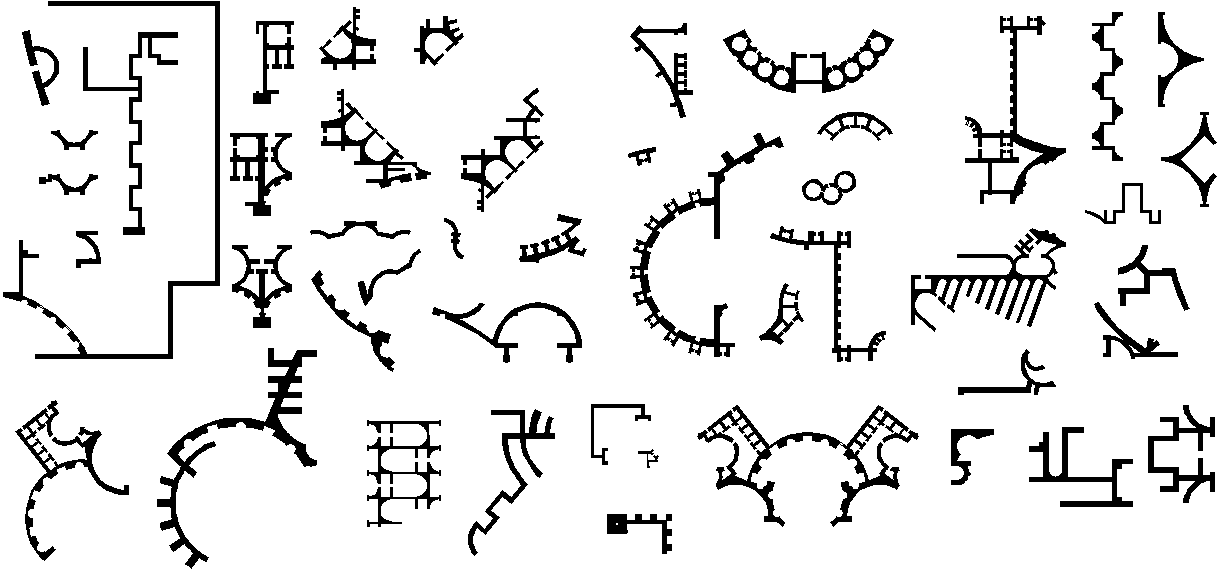Redrawing the Campo Marzio
1997.08.08
After rereading some of Tafuri's text on the Campo Marzio, for some reason it occurred to me that my redrawing of the Campo Marzio is an attempt to "walk in Piranesi's footsteps," meaning, I am trying to learn how Piranesi's imagination operated by doing the same thing he did--literally (re)drawing the plan. I am trying to get as close to Piranesi's own drawing/designing procedure as possible.
I then thought of what Collingwood said about not being able to truly learn from history because we are not able to actually experience history. In this sense, I am trying to re-experience a specific historic occurrence, albeit over 200 years later and with a different drawing technology. Besides the use of CAD, which is actually related to engraving in that it is a type of "drawing" that is readily reproducible, the major difference between what Piranesi did and what I am doing is that Piranesi was designing the plan(s) as he was drawing them, he was producing with his imagination and with his graphic dexterity. Whereas I am only measuring his work and then digitally inputting the data. I am learning through osmosis, however.
"Redrawing History: G.B.Piranesi's Campo Marzio in the Present"
...the opportunity to delve into the virtual realm and how reality and the virtual very much cross paths in the Campo Marzio.
comments on Tafuri
1997.08.10
Perhaps a better interpretation is that Piranesi's Campo Marzio is a "new reality," namely the realm of the virtual. Piranesi is here taking "history" down a totally new path. By "redrawing" history he is, in fact, "writing" a new history.
Piranesi does not reject historical and archeological reality as much as he "redraws" it. He re-presents ancient Rome in its ultimate fertilized state.
Redrawing History- outline
1997.08.12
Redrawing History: Virtually Carved in Stone
Part I: "Redrawing History"
a. my own incentive for doing the project
b. my activity as a reenactment of a specific historical event; perhaps only true way to learn from history (Collingwood)
c. Piranesi's own reenactment (redrawing) of Roman "architectural" history
d. the question of archeological accuracy
e. Roman architecture as fertile architecture
f. Piranesi's Campo Marzio as fertilized architecture
g. Piranesi's imagination: fertilization, assimilation, metabolism
h. the Campo Marzio and virtuality
i. the Campo Marzio today
Part II: "The Ichnographia: Axes, Assembledge, Meaning"
a. the Field of Mars, so where is Mars?
b. the Triumphal Way
c. the axes of life and death
d. the axes of love and war
e. "downtown" vs. "suburbia"
f. pomp and circumstance
Part III: " Typologies of the Campo Marzio"
Part IV: "Glossary of the Campo Marzio"
Part V: "Selected Texts"
Redrawing History - own incentive
1997.08.16
...[the] quote from Scully concerning the Campo Marzio hanging over Kahn's desk. This is very likely the first time I became aware of the existence of Piranesi's Campo Marzio...
Redrawing History - Piranesi's reenactment
1997.08.16
...distinguishing reenactment from archeology.
Was Piranesi trying to recapture the ancient Roman imagination?
Redrawing History - archeological accuracy
1997.08.16
...the Via Flamina and its odd placement in the Campo Marzio. Fasolo refers to the placement of the Via Flaminia as arbitrary. This then also brings into question the positioning of the Equiria, (which Fasolo wrongly identified as a waterway) and how the Via Flaminia today is actually the route inscribed by the Equiria of the Campo Marzio, and how the present day Corso, whose name refers to the ancient race course (I still have to verify this) is not depicted within Piranesi's Campo Marzio but the "arbitrary" Via Flaminia seems to take its place as the "main street" of the redrawing.
...note the locations in the Campo Marzio where Piranesi actually did excavation--this information is available in Lanciani's Forma Urbis Romae.
There is also the connection between the big scoop on the bank of the Tiber (depicted on the Nolli plan) and the Natatio (beach) at the same location in the Campo Marzio.
...a comparison between the Minerva Medica and the Horti Luciliani. Piranesi may be, at times, loose with what he puts where and what the buildings look like, but he is consistent in terms of finding his inspiration in actual Roman buildings.
| |
Redrawing History - fertilized architecture
1997.08.16
...begin the analysis of the Campo Marzio as fertilized architecture with the Porticus Neronianae. The plan itself is like the proverbial missing link because it has both the traditional and the new geometric state all in one design. There is also the solid/void issue which leads directly to the intercourse building in terms of inside/outside, figure ground, penis/vagina, male/female.
...there are references to fecundity in Tafuri, Wilton-Ely, and Fasolo.
Did Piranesi's own imagination itself reach a new "fertilized" state--a state where creative manifestation began to occur exponentially rather that merely linearly?
genetic 1 a : relating to or determined by the origin, development, prior history, or causal antecedents of some phenomenon : CAUSAL, HISTORICAL, EVOLUTIONARY b : based on or determined by evolution from a common source -- used esp. of relations among languages or among words and grammatical forms of languages c : concerned with or seeking to explain, interpret, or understand (as a literary or psychological phenomenon) in terms of its origin and development or of its causal antecedents 2 : of or relating to genetics : characterized or produced by processes of genetics
genetic 1 a : a branch of biology that deals with the heredity and variation or organisms and with the mechanisms by which these are effected 3 : GENESIS
Redrawing History - archeological accuracy
1997.08.22
...the "archeological accuracy" section (which is now entitled "Archeological Mask or Reconstructive Surgery"). ...Piranesi was perhaps giving the Campo Marzio a "face-lift," a second chance where the "faults" have been eliminated and the dormant potential fulfilled.
...a new approach to the "accuracy" section inspired by M. Yourcenar's essay "Faces of History in the Historia Augusta." The main inspiration comes from the line, "Authenticity is one thing, veracity another." ...the notion that "sometimes a sense of poetry rises out of this mass of grim details."
| |
Hadrian, Plotina, and Paulina Domitia, etc.
1998.06.02
According to the biography of Hadrian, he was a favorite of Plotina. In fact, there is some cause to believe that it was Plotina that got Hadrian named as sucessor at Trajan's deathbed. ...more symbolism along the axis of life.
Hadrian's birth mother's name was Paulina Domitia, and this fact lead to further speculation as to the meaning of the Sepulchra Familiae Domitorum at the end of the axis of death--the counter point of Hadrian's tomb. There is reference to both Hadrian's real mother and to his adoptive mother within the axes of life and death.
...sheds light on Piranesi's overall intention in (re-)designing (not reconstructing) the Campo Marzio. Piranesi was redrawing/redesigning the Campo Marzio, a redesign not at all capricious, but one based wholeheartedly on a vast amouint of historical facts. That is to say, Piranesi set out to improve the ancient Campo Marzio's "urban plan" without changing the region's existing program.
...reminded of Stirling's notion of evolutionary designing, and his statements about what could or should be considered when designing a house for K.F. Schinkel 200 years after Schinkel's birth. I am also reminded of Tafuri's wrongness in calling the Ichnographia of the Campo Marzio an "experimental design and therefore an unknown."
Piranesi operated on a few planes when generating his plan of the Campo Marzio--there is the redesigned plane, the Pagan-Christian narrative plane, and the plane of (composite?) temporal palimpsest. To make matters difficult, however, none of these planes complies completely with the other two, nor can any of the planes be viewed completely independent of the other two. In essence, Piranesi's (design) methodology emulates the very nature of Rome itself. The Ichnographia is a plan of many layers of meanings and messages which ultimately aptly represents Rome the city of many physical and historical layers.
As an archeologist, Piranesi "redraws" all the layers of Rome's ancient past. As a well educated 18th century Roman Catholic, he "drafts" the narrative of Rome's Pagan to Christian inversion (conversion), and as a highly evolved architect-designer he displays the "Eternal City" with infinite virtuality.
Equiria
1998.12.01
The Equiria's delineation within the Ichnographia Campus Martius represents the path that the horse-races took. Although Piranesi's linear positioning of the race course maintains some veracity, this rendition of the Equiria, along with its surrounding buildings, exhibits Piranesi's own design rather than an accurate display of the ancient Roman topography within this respective region. For example, the line of the Ichnographia's Equiria coincides exactly with Rome's present-day Via Flaminia, and the Via Flaminia, in turn, is a northern extension of the Corso, which is the traditional site of the races, and derives its name from the same equorum cursus as the Equiria. Like the present Via Flaminia, Piranesi's Equiria is a northern extension of the ancient horse-race's actual place of occurrence. Furthermore, Piranesi starts his Equiria just north of the Petronia Amnis, but Piranesi moved this ancient stream to a more nothern position as well. Hence, Piranesi is obviously aware of the historical facts, yet he chose to transfer the facts to another location. Moreover, Piranesi's careful programming and designing of the buildings either side of his Equiria supports the supposition that he deliberately moved the Equiria to a more accommodating and serviceable location. Piranesi's actions in this regard are thus willful in both senses of the word -- he did not comply with historical accuracy, although he drew the Equiria with the best redesign intentions.
|
